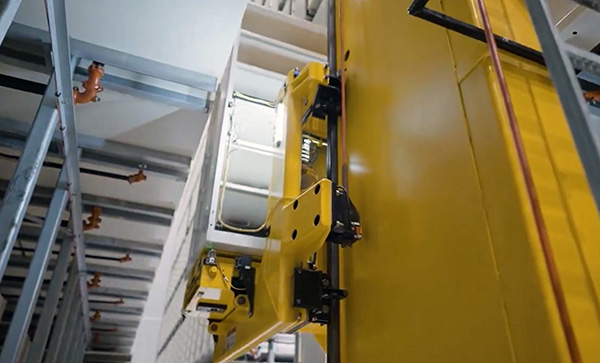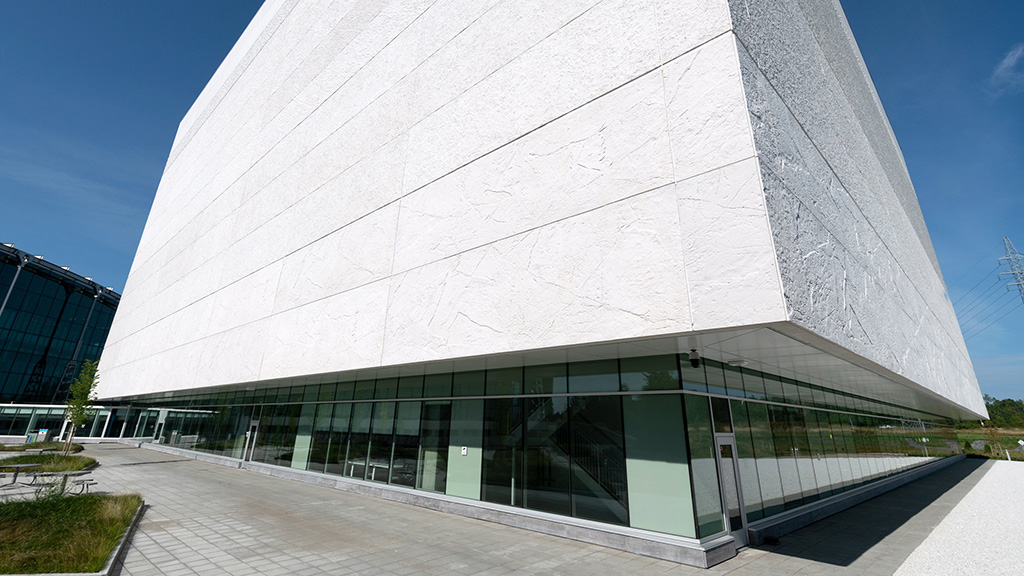The federal government’s $330-million Gatineau 2 document storage facility project, a technologically challenging build that produced the first net-zero carbon archival preservation facility in the Americas, is the subject of the latest case study from the Canadian Council for Public-Private Partnerships (CCPPP).
The new Preservation Storage Facility, located on du Carrefour Boulevard in Gatineau, Que., is the largest automated archival facility in the world. It reached substantial completion on time and on budget, officially opening to the public in November 2022.
Gatineau 2 won the CCPPP’s 2022 National Gold Award for Infrastructure. The case study was released in May.
Amalgamates 22 facilities
CCPPP president and CEO Lisa Mitchell said via email the project is innovative in both its design and its green objectives.
“It is also an excellent example of how a strong, collaborative partnership between the public and private sector can elevate infrastructure and deliver lasting benefits for Canadians,” she said.
The call to re-evaluate how Canada’s important documents are preserved came over a decade ago. Holdings and public access services were being delivered from 22 facilities across Canada, many of which failed to meet the government’s specialized collections storage requirements, the case study explained.
Documents in the national collection could be put at risk because storage space was not meeting best international practices for optimal long-term preservation, including limited light exposure, controlled temperature and relative humidity, the authors observed.
Financial close on the DBFOM project was reached between Library and Archives Canada and Plenary Properties Gatineau in April 2019. Consortium members included Plenary Americas, PCL Investments Canada, PCL Construction, B+H Architects and Equans (formerly ENGIE Services).
Mitchell noted the project included not only the design, construction, financing and long-term maintenance of the new preservation storage facility but the optimization of selected vaults in the existing preservation centre.
“What we find interesting is how protecting Canada’s culturally important materials is built into every aspect of the design of the new Preservation Storage Facility,” said Mitchell.
“The collection vaults are elevated to mitigate any potential flooding from the lowlands and the river near the building. Even the roof design has been carefully considered to control rain, snow and ice.”
Inside, she noted, an additional layer of protection is provided by a two-metre-wide buffer zone, which runs around the perimeter of the vaults, isolating them from direct outdoor conditions, including temperature, humidity and weather fluctuations.

Building within a building
That has led to the project being labelled a “building within a building.”
Due to the sensitive nature of the collection items, Mitchell noted, a list of 26 prohibited materials was included in the project specifications. Common materials such as gypsum board and wood were prohibited near the collection vaults because of acidic properties or susceptibility to create dust over time.
Each of the vaults has its own storage and retrieval machine with a mast that measures 84 feet in height. The Automated Storage and Retrieval System (ASRS) retrieves containers and transports them to and from the central circulation room.
As the ASRS can operate in the dark, the case study noted, the lighting in the storage vaults can be kept off or low during during normal operations, increasing energy efficiency.
The mechanical systems include high-efficiency, electrically fed mechanical heating and cooling systems supplied by Hydro-Quebec’s carbon-neutral electricity grid, said Mitchell.
“These systems are supplemented by efficient non-carbon generating geothermal and robust, highly efficient building envelope compositions.”
Substantial completion was reached in June 2022.
Mitchell noted that contractually, risk of schedule overruns and the management of subtrades was the responsibility of PCL, while Library and Archives Canada was responsible for supervening events and latent defects affecting the existing preservation centre.
“There was a strong sense of collaboration between the partners,” she said. “This was notable in how they managed the COVID-19 pandemic and still delivered on time and on budget.”
Applications opened June 4 for the 2024 National Awards for Innovation and Excellence in P3s. Submissions are due by 12 p.m. on Sept. 6.
Follow the author on Twitter @DonWall_DCN.





Recent Comments